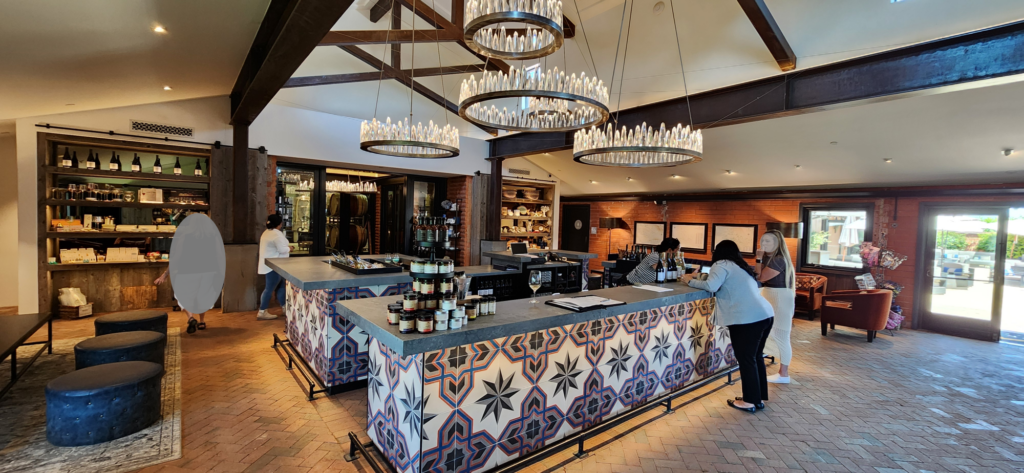A new car is the pride and joy of your driveway. There’s a special feeling when you put on a new suit. But tasting new wines doesn’t always bring the same enjoyment. There’s such a thing as a wine that’s too new. We once had the experience of a private visit to a fine winery in Bordeaux, in September. The grapes had just been pressed and the juice had been fermented only a few days before. Our host, with a subtle smile, gave us a little taste. Ugh! It was awful, although we knew that in the years to come it would become wonderful.
That’s an extreme case of a truism: Wine improves over time. Like so many truisms, this one comes with lots of exceptions. Some wines improve over time. At a certain point they stop improving. Beyond that point, many of them become worse. And then a lot worse.
The cellar at Volpaia in Tuscany.
For the most part, wineries offer the latest releases for their wine tastings. There is an implied commitment that once the wine is put up for sale, it’s drinkable. Fair enough, but that doesn’t mean it’s at its peak. Many wineries offer tastings of so-called library wines, of older vintages that are supposed to show what the potential these wines have for improvement over time.
Here are a few tips for balancing the new and the old wines you might have the opportunity to sip when you visit a winery.
- Use your imagination. As you taste a recently released wine – or even better, if you are offered a barrel tasting – mentally trick your nose and tongue into recognizing what a wine could be, beyond what it is. Wine critics and importers do this all the time. Oh, you’re not a critic or an importer? Do your best or consider some of these other tips.
- “Age” the wine artificially. As we have written previously, we bring a clef du vin (or wine key) with us. This handy little tool simulates the aging process, giving an idea of what a wine might become. There’s no way to know if it creates the exact tastes and aromas that will be there five years hence, but it gives you an idea.
- Compare a library wine to the current bottling. The 2023 Cabernet Sauvignon may be delightful, but the 2010 of the same grape is profound. Or not. Some people prefer the youthful exuberance of newly bottled wines to old, tired stuff. Then there are those who won’t open a bottle for the first decade after the grapes were picked. There’s nothing like a side-by-side comparison to calibrate your palate.
- Don’t be afraid to voice your opinion. Just because you paid extra to sip a vintage from yesteryear doesn’t force you to prefer it. And if you liked the older wine at one vineyard more than another, that’s okay too. It’s okay to speak your mind, but do so quietly if you’re not a fan of the library wine you’re tasting. Of course, if you do think the older wine is fantastic, say so openly and with gusto.







